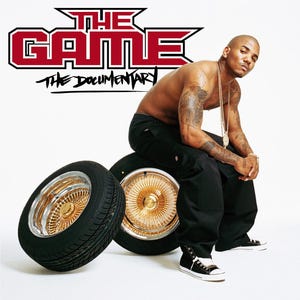Is the CMO Role on the Way Out?
The cyclical trimming of CMO roles begs the question: is the CMO role long for this world?
When I tell people I work in marketing, most people think I come up with the cool ideas that they see on TV or on social ads. To the layman, “advertising” is associated with the creative aspect of it. Which is fair, as without the creative engine marketing doesn’t really exist.
And traditionally the CMO has been seen as the creative visionary of a company - big, splashy branding campaigns that make people keep a company top of mind. Think Snickers’ “Hungry” campaign, or Nike’s “Just Do It” slogan - this is advertising writ large: a cultural connection between consumer and corporation. But marketing is much, much more than that - has the CMO role evolved to keep up?
Define “Marketing”
Marketing goes well beyond culturally impactful campaigns meant to drive awareness and eventual purchase of a company’s products and services. This author works in data and analytics and is consistently not in creative sessions [Ed.’s Note: Entirely justified.] I work alongside data scientists and engineers, we consult neurology PhDs and sociologists to better understand consumers and their decision-making processes. We have to untangle the complex web of marketing technology (aka “martech”) and work with tech giants like Google and Meta to ensure proper rendering and tracking of advertiser dollars. In other words, this isn’t your parent’s marketing ecosystem.
Not that it’s ever been a simple game, but the advent of the digital world (and the further advent of programmatic buying in that space and beyond) has added a layer of complexity that pre-internet and pre-programmatic CMOs could only have imagined in their wildest fever dreams. It’s a role whose domain has changed drastically over the years.
Should I Stay or Should I Go?
It’s certainly not the only role in the c-suite that has seen incredible change. CEOs and COOs face challenges their predecessors wouldn’t have even had on their bingo cards. But the CMO faces a few uphill battles other c-suite execs don’t.
The first is the transient nature of the CMO job. It’s one of the shortest-tenured c-suite positions, with CMOs lasting an average of just over 4 years in their job. This is a bit misleading, as at the top 100 advertisers the tenure is closer to 3 years, as there are more consumer-facing brands here and the B2B companies tend to have longer-tenured CMOs due to the more specialized nature of that category. In contrast, CEOs are typically in role for around 6.7 years.
It’s hard to onboard to a c-suite role and stay on top of the ever-changing marketing landscape year after year in a public company. What makes it harder is the ill-defined role of the CMO - do they oversee just advertising? PR, too? What about internal employee engagement and company mission? It can be all of this or just one or two pieces, and it varies by company.
It doesn’t help that marketing is one of the first capabilities trimmed down when lean times are on the horizon. Even though empirical research has consistently shown that recessions are some of the best times to market (in part because you can zig when other companies zag by cutting advertising), companies still see the marketing budget as one of the more fungible line items on their balance sheets.
The same can be seen with CMOs. Take a look at the some of the companies who eliminated the role but did a reversal a few short years later. In 2019, McDonald’s scrapped the global CMO role, only to bring it back less than 12 months later. Coca-Cola did the same thing (though it took twice as long for them to call “oopsie.”)
So I’ll Stay, Then?
Life isn’t an Ang Lee movie - there are CMO roles that have gone into the frontier and not come back (though, to be fair, over 2/3 of major companies still have a CMO.) But when the CMO role is properly eliminated, where does the slack get picked up?
Sometimes it simply falls under the COO - this makes some sense, given marketing is an operationally-heavy endeavor and while good strategy is required for good marketing, in a world with no CMO the CEO’s office would ideally handle all strategy (including marketing) for the COO’s office to execute. Again, an ideal state, but the argument could be made for a COO absorption of the role via what Digiday calls the “unbundling” of the responsibilities from a single officer into multiple senior leaders.
It’s an effective argument - given how multi-dimensional advertising has become over the decades, and the potential overlap with other departments like the CTO’s and the CFO’s, why not go a level lower and create a more multi-disciplinary structure reporting into the COO?
Well, a couple of reasons. The COO is one of the few c-suite roles with a more transient population than the CMO (under 3 years) - so the strategy required for a large brand’s marketing presence would be highly disrupted by this much change at its highest level.
But the larger issue is marketing’s seat at the table being yanked away with the elimination of a c-suite executive focused on it. Being a CMO isn’t just about the sweet title and D&O insurance - access to the CEO and the board is crucial for marketing initiatives and it would be better represented by someone whose focus is marketing and not whose focus is operations, of which marketing is a part. A seat at the table for such a crucial discipline in these large companies is key (something McDonald’s and Coca-Cola realized firsthand.)
C(REA)MO
Just like when Phyllis tells Dwight and Jim that there’s always a theme, in order to justify anything in business today there needs to be a financial aspect of it.
A lot goes into a company’s valuation. You have the liquidation value, the book value, the IP value - these are relatively formulaic ways of valuing a company as long as one understands the underlying market value of each of those assets.
But these values aren’t the whole story: rarely does a company’s market value simply equal the sum of these parts. There’s a further valuation of the brand itself - this is where CMO work is crucial.
We often see the value of a brand in the reverse: the dreaded write-down. Back in 2019 one of the biggest business headlines was Kraft-Heinz’s write down of over $15.4 billion - the majority coming from the devaluation of the Kraft and Oscar Meyer brands. The Oscar Meyer Wienermobile didn’t get repo’d the day before - instead, the bean counters came to the uncomfortable realization that the brands simply weren’t strong enough to garner the kind of dollars pegged to the existing value.
Chief Summary Officer
Is the CMO position dead or dying? No - 70% of companies still have one and we saw major multinationals try to get ride of the position but quickly realize they, in fact, needed it. The position could be unbundled, as long as the ensuing positions are in the c-suite (think Chief Brand Officer combined with a Chief Customer Officer) and have board access, otherwise the crucial marketing department will be hamstrung.
It’s not a discipline that’s “nice to have,” as there are real financial repercussions for letting marketing stagnate - organizationally or otherwise. It’s certainly more difficult to value a brand - and, thus, a machine meant to maximize said value through the CMO’s office - but the flip side of not doing it could be billions-sized errors.
Grab Bag Sections
WTF Tony Hinchcliffe: In a rally that basically begs to be compared to a 1939 rally of similar ilk, the Trump campaign brought on comedian Tony Hinchcliffe. Tony runs the popular podcast Kill Tony; he’s vulgar and blue is more or less the only color he knows comedically. His style is supposed to insult and “roast” (basically a cover for simply being a dick.) His comedy is hit or miss.
But here’s the thing about comedy: you need to be funny. And you really should be punching up. Follow these two rules and your “offensive” comedy will mostly be seen as art vs. critique (a fine line.) Tony did neither of those things on Sunday for Trump’s rally. In fact, his “set” was so bad that the Trump campaign - THE TRUMP CAMPAIGN - tried to distance itself from him and his act.
And they’d be smart to - the Puerto Rican communities across the US, while not a monolith, are both US citizens by birth and politically active. Not a group you want to be pissing off right before a very close election.
But there’s more here - many of us remember Trump’s response to Hurricane Maria after that storm brought untold destruction to an island that is a longstanding colony of the United States. It is particularly frustrating for this newsletter author, whose trip to the island in high school is a seminal moment in his coming-of-age story (take me out for a drink or three and you might get the run down.) Calling it a floating island of garbage is neither funny nor comedy - it is cruel, and it perfectly encapsulates the Trump movement’s approach to those deemed “lesser” in the eyes of MAGA.
I know we’ve said in the past that we’re not going to get political on this blog, but the stakes are simply too high and Sunday’s rally was textbook fascism - you can ask the foremost leading expert on the term and its ramifications what he thinks about it. My grandfather had to take a boat across the Atlantic Ocean to fight fascism in his lifetime (and he was shot for the effort.) You and I can simply do it at the voting booth next week, likely without the same physical ramifications.
Album of the Week: We’ve been on a rap kick lately - let’s keep that going. Let’s go (back, back) to Cali and dissect The Game’s major label debut The Documentary, released after signing with G-Unit, along with Aftermath and Interscope records.
His signing to G-Unit - then a New York collective (with Young Buck from Nashville thrown in, but who could align with the East Coast) - was paradigm-shifting in 50’s approach to signing artists. Dr. Dre is all over this album, and it has a very West Coast feel (despite Scott Storch and Just Blaze having a decent amount of production credits.)
The album is very good, and is credited with a resurgence of West Coast rap at a time when most of the quality artists were coming from the East and the South. This album helped pave the way - at least partially - for other Compton artists like Kendrick Lamar and Nipsey Hussle to come up from similar circumstances in later years. There aren’t many skips, with the first half of the album being very good, high-energy storytelling with the second slowing down and becoming more introspective.
So why isn’t this album a springboard for The Game to rap superstardom? If the stories are true, he can be difficult to work with and his feuding with 50 Cent behind the scenes sealed his fate with Aftermath. In fact, the kernel of their beef was the fact that 50 came out and said he saved the album from being shelved - the fact that 50 is an EP, features on three songs, and has writing credits all over the album speaks to the truth of this. The Game also had to spend too much airtime on the title track unconvincingly trying to say he did not diss Jay-Z when he had, in fact, dissed Jay-Z. That doesn’t exactly endear oneself to label execs. Having to switch labels from your debut to your sophomore is a very large mountain to scale, and in The Game’s case may have been too much inertia to overcome despite his momentum.
Quote of the Week: “Stopping advertising to save money is like stopping your watch to save time.” - Henry Ford










